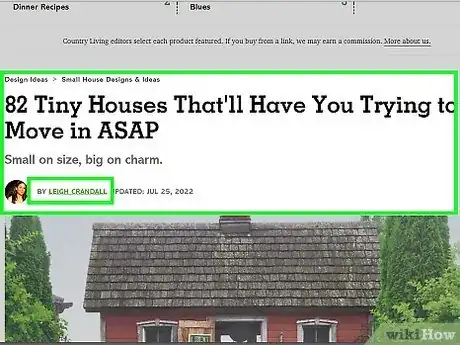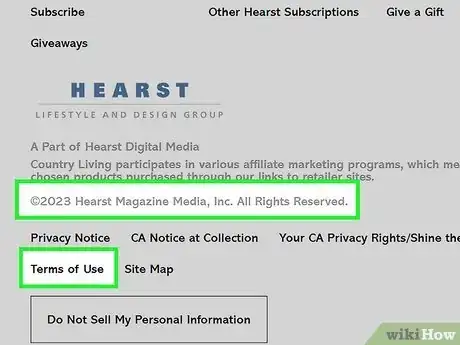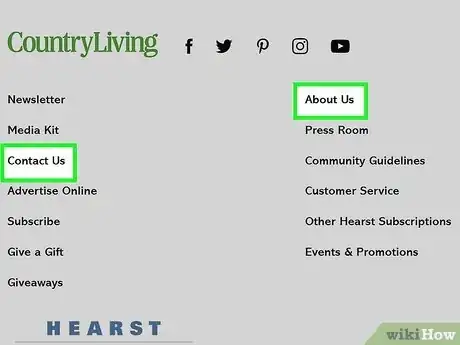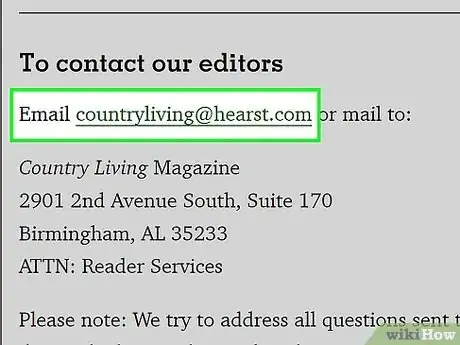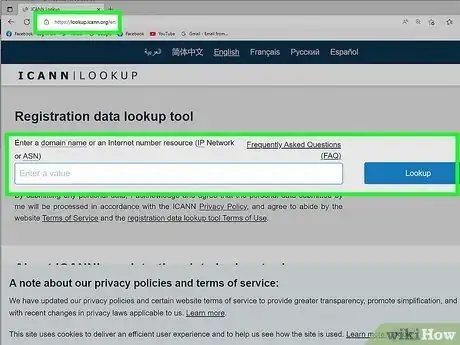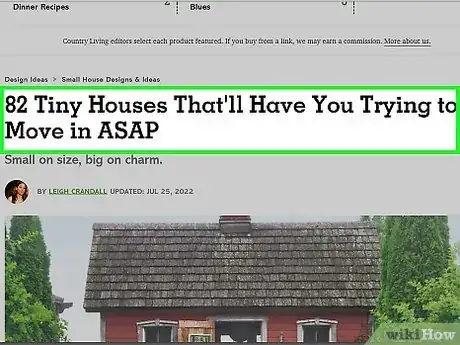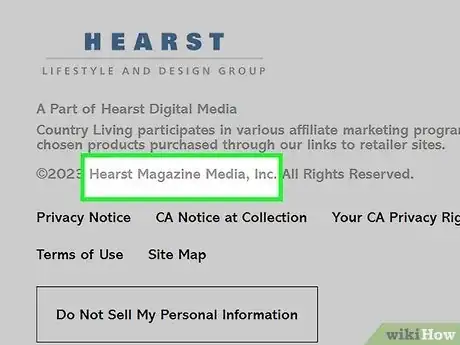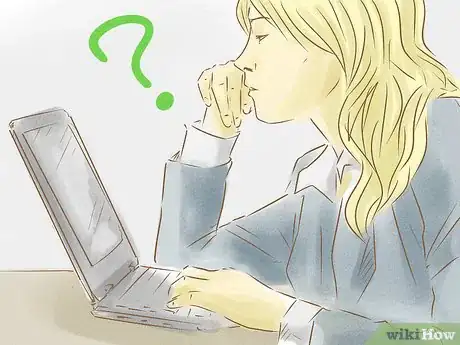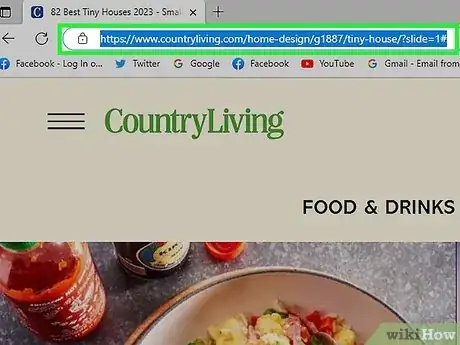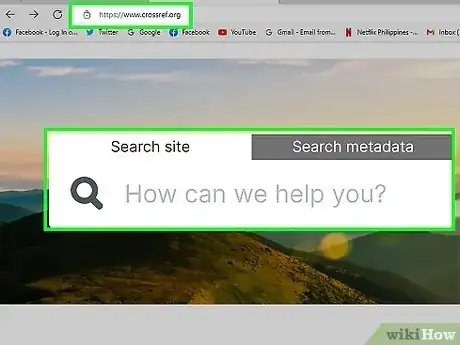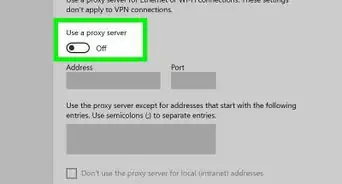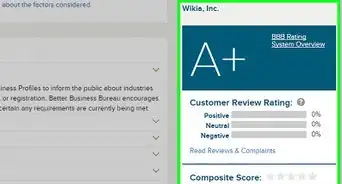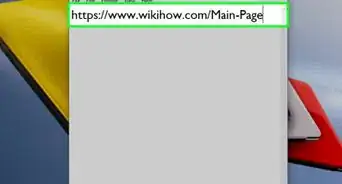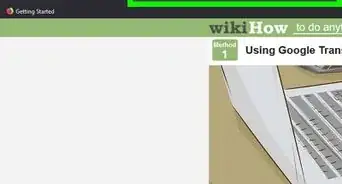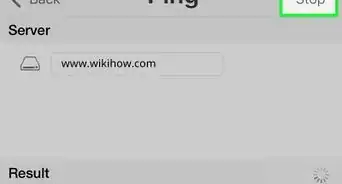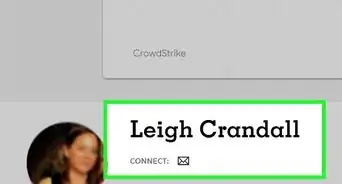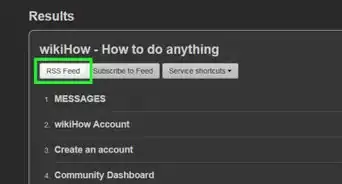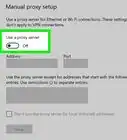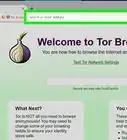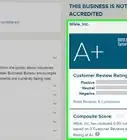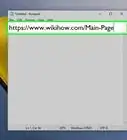Cite a website in MLA or APA
This article was co-authored by wikiHow staff writer, Kyle Smith. Kyle Smith is a wikiHow Technology Writer, learning and sharing information about the latest technology. He has presented his research at multiple engineering conferences and is the writer and editor of hundreds of online electronics repair guides. Kyle received a BS in Industrial Engineering from Cal Poly, San Luis Obispo.
There are 7 references cited in this article, which can be found at the bottom of the page.
This article has been viewed 519,750 times.
Learn more...
Finding the author of a website is important if you're writing a paper or doing a project that requires citations. This information can be difficult to determine, however, especially if the website you're looking at isn't article-based. There are several places you can try to look for the author, but if you can't find one you can still cite the web page. This wikiHow will show you how to find the author of a website and cite a website in MLA or APA.
Things You Should Know
- Check at the top or bottom of an article for the author's name. You can also search for a "Contact" or "About" page.
- Look in the terms and conditions or the website's copyright information. Sometimes, you'll find the author displayed next to the copyright.
- Search Google or WHOIS to find out who the domain is registered to.
Steps
Finding a Website Author
-
1Look at the top and bottom of an article. Many websites that employ contributing and staff writers will often display the author's name at the top or bottom of an article. This is the first place you should look for an author.
- The author might be listed in an “article info” section, under the article title, or at the end of the article in an “about the author” section.
- Note that if you can’t find the author, your APA in-text citations will use the article title instead. Check out our complete guide to parenthetical citations for more info.
-
2Find the website's copyright information. Some websites will display the author next to the copyright information at the bottom of the page. This may be the publishing company as opposed to the actual author.
- You can also try looking at the “term of use” page to find more information about the publisher.
Advertisement -
3Look for a "Contact" or "About" page. If the specific page you are looking at does not have an author and is on a reputable website, it was probably authored under the authorization of the company or agency that runs the site. This can serve as the author if no specific author is listed.
-
4Ask the owners. If you can't find contact information for the website, you can try sending an email and asking for the author of a specific page or article. You aren't guaranteed to get a response, but it may be worth a shot.
- Look for “contact information” or “contact us” in the website’s footer.
-
5Search Google with a portion of the text to look for the original author. If you're reading a website that isn't being ethical, it may be displaying information copied from another source. Copy and paste a paragraph of text into a Google search to see if you can find who the original author is.
-
6Use WHOIS to find the website owner. WHOIS is a database of website registrations, and you can use it to try to track down a website owner. This will not always work, as the owner is often not the author, and many owners and companies use privacy services to hide information.[1]
- Visit whois.icann.org and enter the website address into the search field.
- Look for the "Registrant Contact" information to find who registered the domain. You can still try to contact the owner through their proxy email if the registration information is blocked.
Citing a Website Without an Author
-
1Find the title of the page or article. You'll need the title of the article or page you are on as part of your MLA website citation or APA website citation. Even if it's a blog post, you'll still need the title.
- If you’re looking for more citation information, check out our guide on citing sources in MLA format.
-
2Get the website name. Besides the title of the article, you'll need the name of the website. For example, this article's title is "How to Find the Author of a Website" and the website name is "wikiHow."
-
3Try to find the publisher. This is the company, organization, or person that produces or sponsors the website. This may not be different than the website title, but be sure to check. For example, a health organization may run a separate website devoted to heart health.
- You can typically find the publisher at the bottom of the page, in the copyright information.
-
4Find the date the page or article was published. This isn't always possible, but you should always try to find the publication date if you can.
-
5Get a version number if possible (MLA). If the article or publication has a volume or version number, make sure to note this for MLA citations.
-
6Get the article or web page URL (APA and older MLA). Depending on which method of citation you're using, and your instructor's guidelines, you may need the URL of the page or article.
-
7Get the DOI (digital object identifier) for scholarly journals (APA). If you are citing an online scholarly journal, include the DOI instead of the URL. This ensures that the reader will be able to find the article even if the URL changes:[4]
- For most publications, you can find the DOI at the top of the article. You may need to click an "Article" button or a button with the publisher's name. This will open the full article with the DOI at the top.
- You can look up a DOI by using the CrossRef search (crossref.org). Enter in the article title or the author to find the DOI.
- Some journal articles will have a button called “cite this source” or similar. This will generate the citation automatically for the article!
-
8Construct a citation from your available information. Now that you've gathered everything you can, even if you don't have an author, you're ready to create your citation. Use the following formats, skipping the Author entry if you can't find one:[5]
-
MLA: Author <Last, First M>. "Article Title." Website Title. Version Number. Website Publisher, Date Published. Web. Date Accessed.[6]
- Use "n.p." if there is no publisher and "n.d." if there is no publishing date.
- APA: Author <Last, F>. Article Title. (Date Published). Website Title, Issue/Volume Number, Pages Referenced. Retrieved from <Full URL or DOI>[7]
-
MLA: Author <Last, First M>. "Article Title." Website Title. Version Number. Website Publisher, Date Published. Web. Date Accessed.[6]
Community Q&A
-
QuestionHow do I find the publisher of an article?
 Community AnswerThis is usually at the bottom, with a copyright symbol and a year.
Community AnswerThis is usually at the bottom, with a copyright symbol and a year. -
QuestionWhat can I do if there isn't an About Page?
 Community AnswerTry to find details of an email, then type the email or number into Google and a name might pop up.
Community AnswerTry to find details of an email, then type the email or number into Google and a name might pop up. -
QuestionWhen looking at the author of a website, how do I know if they are credible?
 Community AnswerFirst, look at the author's credentials. See if they have any professional experience in the field they're writing about, and if so, look at what they did, how long they did it, and where they did it. Usually if someone has extensive experience in a particular field or about a particular topic, they are considered credible. Then, do some research about the author. Are they generally considered to be credible or are they completely unheard of? Has that author's work ever been published in any reputable journals? These questions and answers should help you decide whether or not an author can be considered credible.
Community AnswerFirst, look at the author's credentials. See if they have any professional experience in the field they're writing about, and if so, look at what they did, how long they did it, and where they did it. Usually if someone has extensive experience in a particular field or about a particular topic, they are considered credible. Then, do some research about the author. Are they generally considered to be credible or are they completely unheard of? Has that author's work ever been published in any reputable journals? These questions and answers should help you decide whether or not an author can be considered credible.
References
- ↑ https://techwalla.com/content/author
- ↑ http://content.easybib.com/guides/citation-guides/mla-format/how-to-cite-a-website-mla/
- ↑ https://owl.purdue.edu/owl/research_and_citation/mla_style/mla_formatting_and_style_guide/mla_works_cited_electronic_sources.html
- ↑ http://blog.apastyle.org/apastyle/2009/09/a-doi-primer.html
- ↑ http://www.apastyle.org/learn/faqs/web-page-no-author.aspx
- ↑ https://owl.english.purdue.edu/owl/resource/747/08/
- ↑ http://blog.apastyle.org/apastyle/2010/11/how-to-cite-something-you-found-on-a-website-in-apa-style.html
About This Article
1. Look at the copyright info.
2. Locate the About or Contact page.
3. Search Google for a portion of text to find the original author.
4. Look up the domain name with WHOIS.
